In February 1973, workers at NASA’s Kennedy Space Center (KSC) in Florida continued to prepare two Saturn rockets for the initial Skylab launches just three months away. In one high bay of the Vehicle Assembly Building (VAB), they continued testing of the Saturn V rocket with the Skylab 1 space station mounted on top to...
In February 1973, workers at NASA’s Kennedy Space Center (KSC) in Florida continued to prepare two Saturn rockets for the initial Skylab launches just three months away. In one high bay of the Vehicle Assembly Building (VAB), they continued testing of the Saturn V rocket with the Skylab 1 space station mounted on top to prepare it for its May 14 launch. Work on the Saturn IB to launch the Skylab 2 first crew to the space station on May 15 continued as engineers in the VAB topped off the rocket with the flight Apollo spacecraft, and then rolled the assembled vehicle to Launch Pad 39B on Feb. 26. NASA named a Program Scientist to manage the multidisciplinary research conducted aboard Skylab.
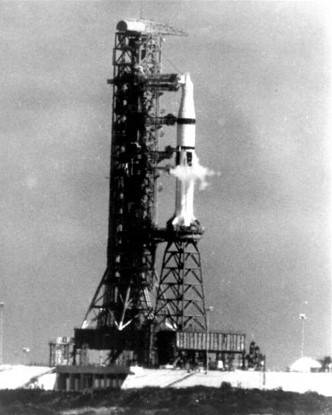
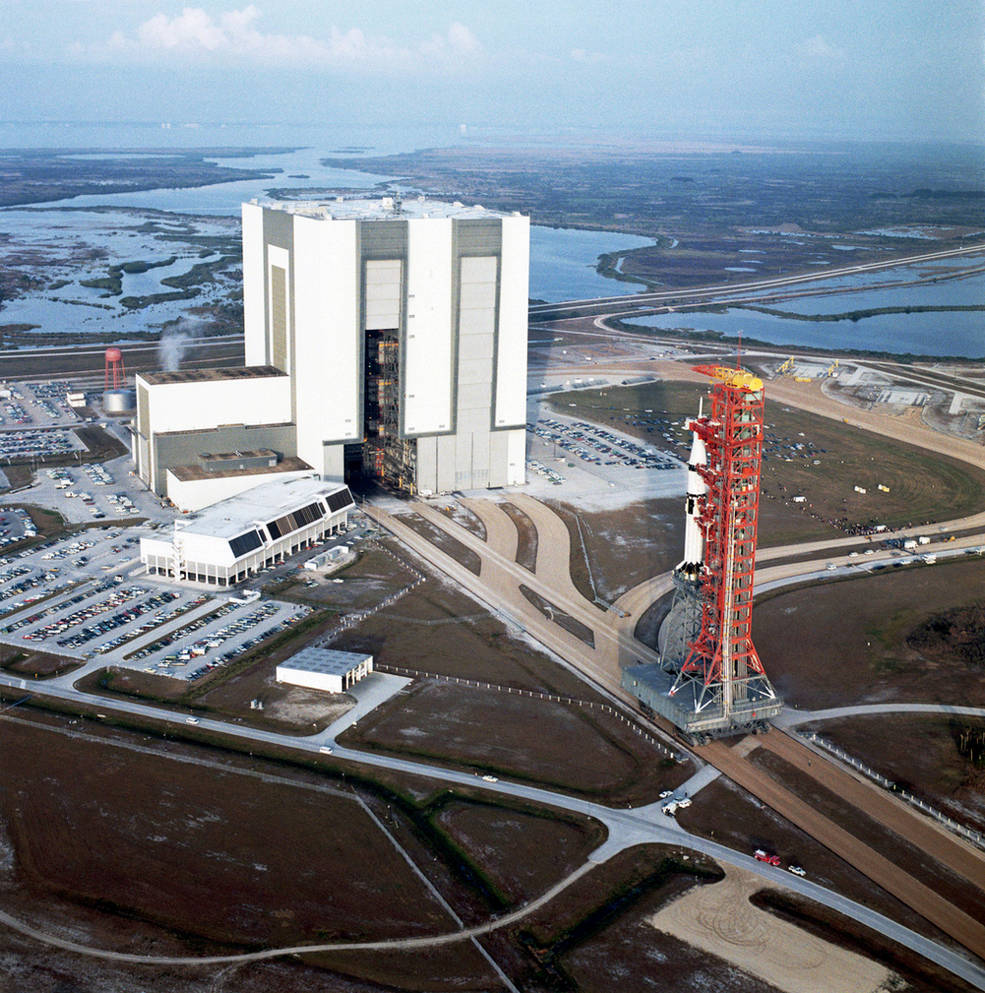
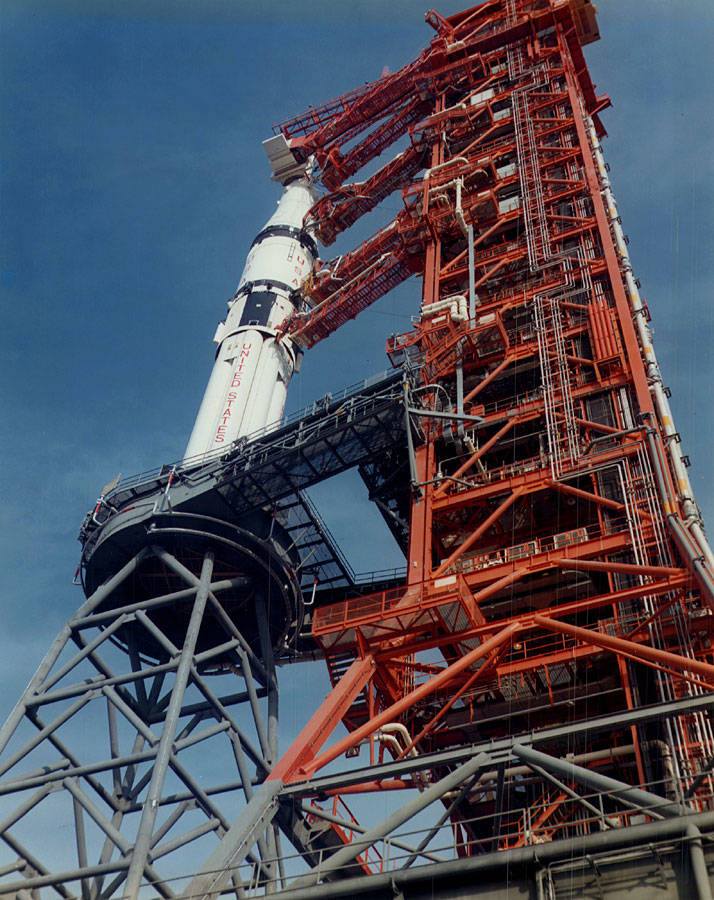
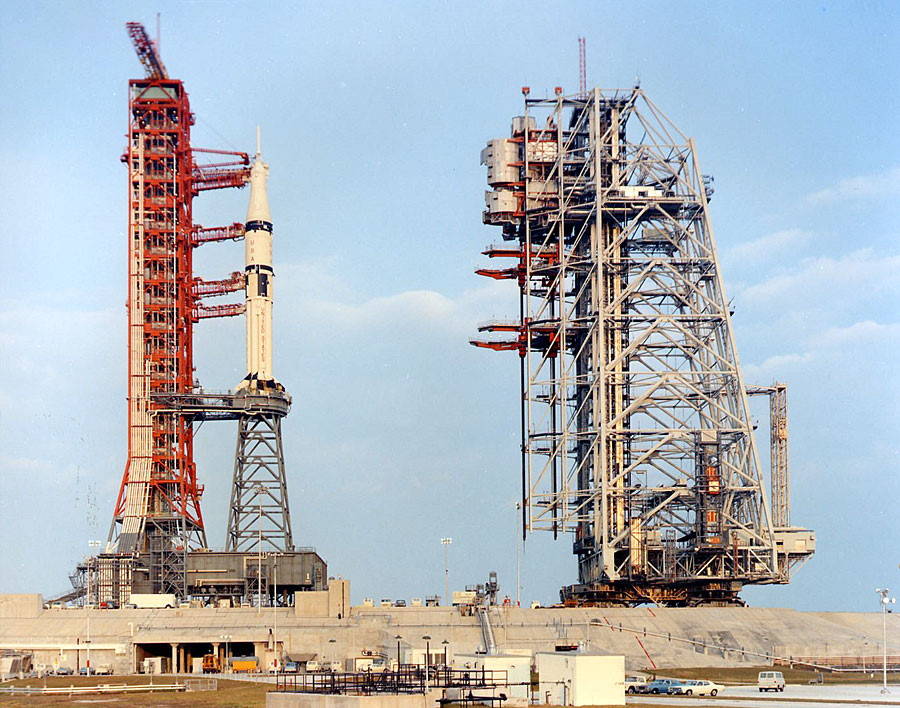
Left: Mounted on its “milkstool” pedestal, the Skylab 2 Saturn IB vehicle on Launch Pad 39B at NASA’s Kennedy Space Center in Florida undergoes the Propellant Loading All Systems Test, using the Flight Verification Vehicle boilerplate spacecraft and no Launch Escape System. Middle left: With the flight Command and Service Module mounted on top, the Skylab 2 Saturn IB rolls out of the Vehicle Assembly Building for the second time. Middle right: The Saturn IB on its milkstool during the rollout to the pad. Right: The Mobile Service Structure approaches the Saturn IB rocket at Launch Pad 39B.
Workers at KSC continued to process the two launch vehicles for the Skylab program’s first missions, the Saturn V for the Skylab 1 workshop and the Saturn IB for Skylab 2, the first crew of Charles “Pete” Conrad, Dr. Joseph P. Kerwin, and Paul J. Weitz to reside aboard the station. In the VAB’s High Bay 2, engineers had completed the assembly of the station’s major components atop the Saturn V in January and conducted integrated tests of the assembled launch vehicle and launch umbilical tower. The Saturn IB, mounted on its “milkstool” pedestal, and topped with the Facilities Verification Vehicle (FVV) boilerplate Apollo Command and Service Module (CSM) but no Launch Escape System (LES) tower, had rolled out to Launch Pad 39B in January for compatibility tests that included a Propellant Loading All Systems Test (PLAST), similar to a Countdown Demonstration Test, during which workers fueled the rocket. Following completion of the PLAST on Jan. 30, workers rolled the rocket back to the VAB’s High Bay 1 on Feb. 2 for further testing. Meanwhile, in KSC’s Manned Spacecraft Operations Building, workers removed the flight CSM from the altitude chamber on Jan. 29 and installed the nozzle for the Service Propulsion System engine. On Feb. 9, they mated the CSM with its Spacecraft Lunar Module Adapter and trucked the assembled spacecraft to the VAB on Feb. 20. On the same day, VAB technicians removed the FVV from the Saturn IB, replaced it with the flight CSM the following day, and added the LES tower on Feb. 24. They rolled the fully assembled flight vehicle back out to Launch Pad 39B on Feb. 26, moving the Mobile Service Structure around it the next day to begin powering up the rocket.
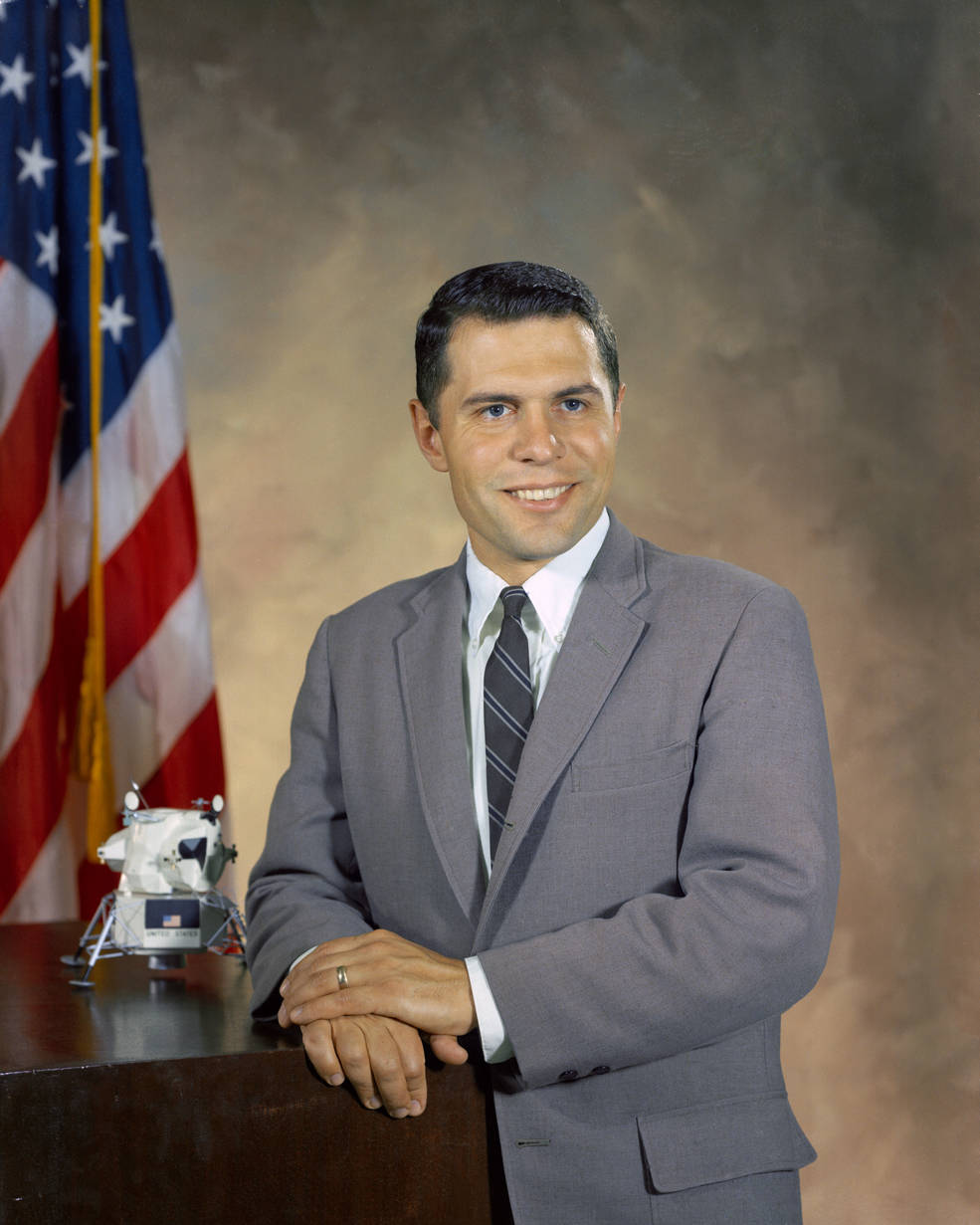
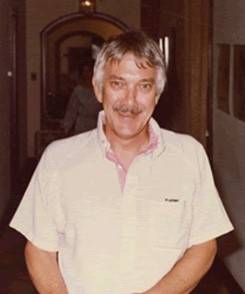
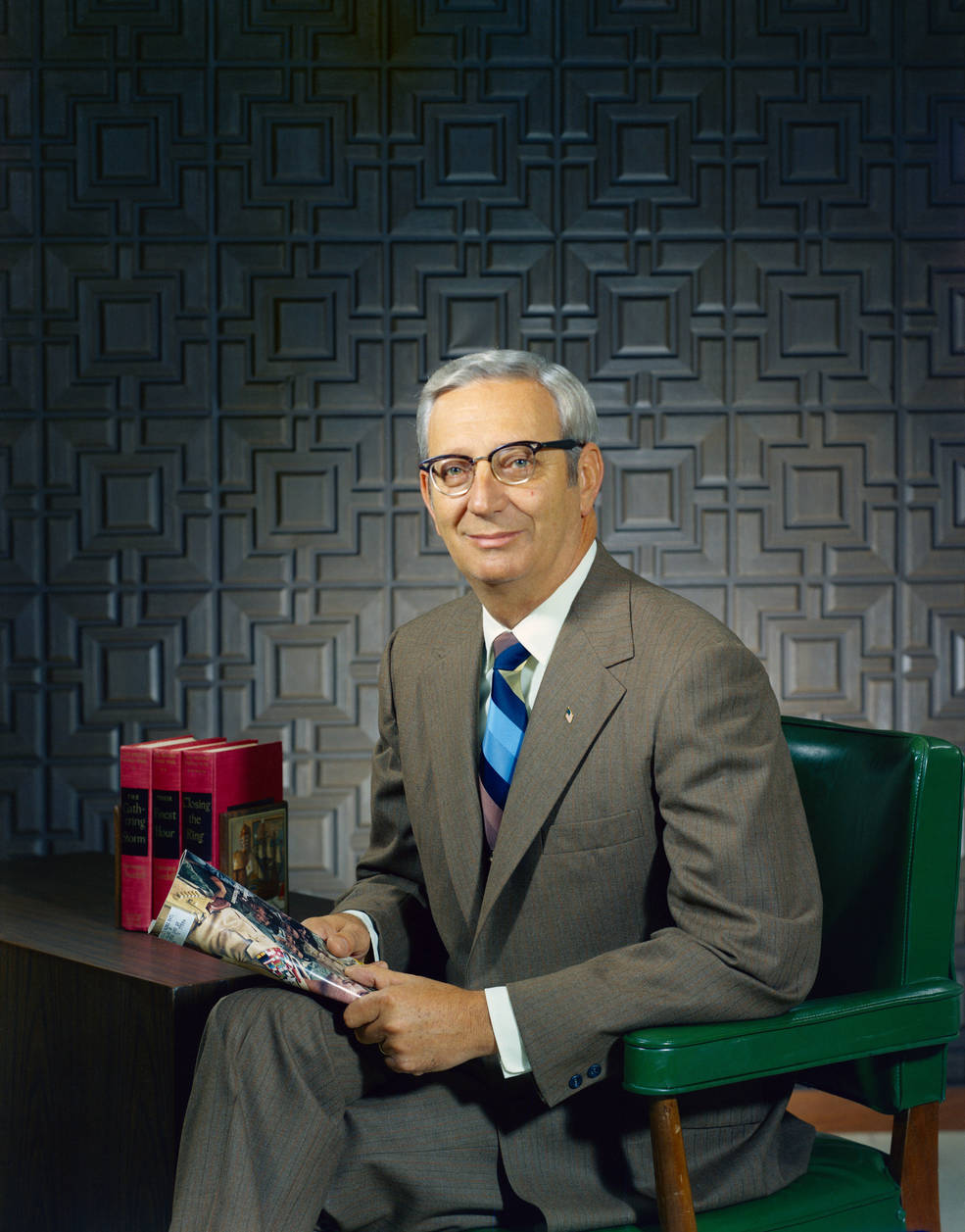
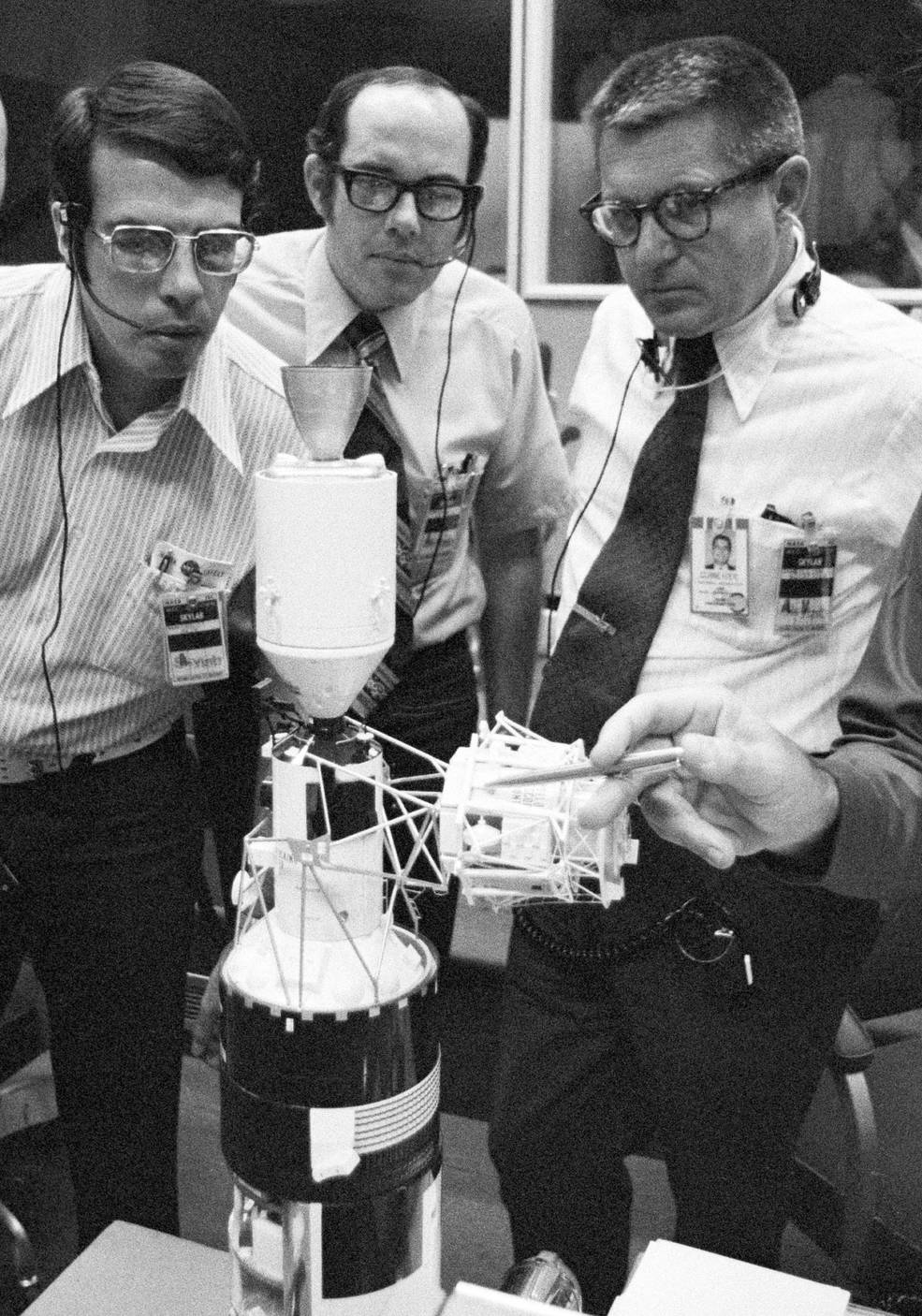
Left: Skylab Program Scientist astronaut Robert A.R. Parker. Middle left: Skylab Assistant Program Scientist John R. “Jack” Sevier. Middle right: Skylab Program Manager Kenneth S. Kleinknecht. Right: In the Mission Control Center at NASA’s Johnson Space Center in Houston, Skylab Program Director William C. Schneider, right, examines a model of the Skylab space station.
On Feb. 19, NASA designated scientist-astronaut Robert A. R. Parker as the Skylab Program Scientist, responsible for ensuring that the inflight science requirements as implemented by flight operations elements met NASA and Skylab program objectives. John R. “Jack” Sevier of JSC’s Program Operations Office served as Assistant Program Scientist. Parker reported to Skylab Program Manager Kenneth S. Kleinknecht and during actual mission operations responded to Skylab Program Director William C. Schneider at NASA Headquarters in Washington, D.C. On Feb. 27, the McDonnell Douglas Corporation of Huntington Beach, California, delivered a high-fidelity mockup of the Skylab Orbital Workshop to NASA’s Marshall Space Flight Center in Huntsville, Alabama, for use as a systems engineering unit during mission operations, together with dynamic test articles of the Airlock Module, Multiple Docking Adapter, and Apollo Telescope Mount.
World events in February 1973:
February 1 – The comedy “La Cage aux Folles” premieres at the Théatre du Palais-Royal in Paris.
February 3 – The song “Crocodile Rock” becomes singer Elton John’s first U.S. number one hit.
February 4 – The International Olympic Committee awards the 1976 Winter Games to Innsbruck, Austria, after Denver turned down the offer to host the Games.
February 6 – Construction begins on the CN Tower in Toronto. When completed in 1975, the 1,815-foot tower became the world’s tallest free-standing structure until the Burj Khalifa in Dubai surpassed it in 2007.
February 8 – Senator Samuel J. “Sam” Ervin of South Carolina is named as the Chairman of the Senate Watergate Committee.
February 12 – Operation Homecoming, the release of American prisoners of war in Vietnam, begins.
February 19 – NASA’s Manned Spacecraft Center in Houston is renamed the Lyndon B. Johnson Space Center, following the death of the former President.
To be continued …
John Uri
NASA Johnson Space Center




























